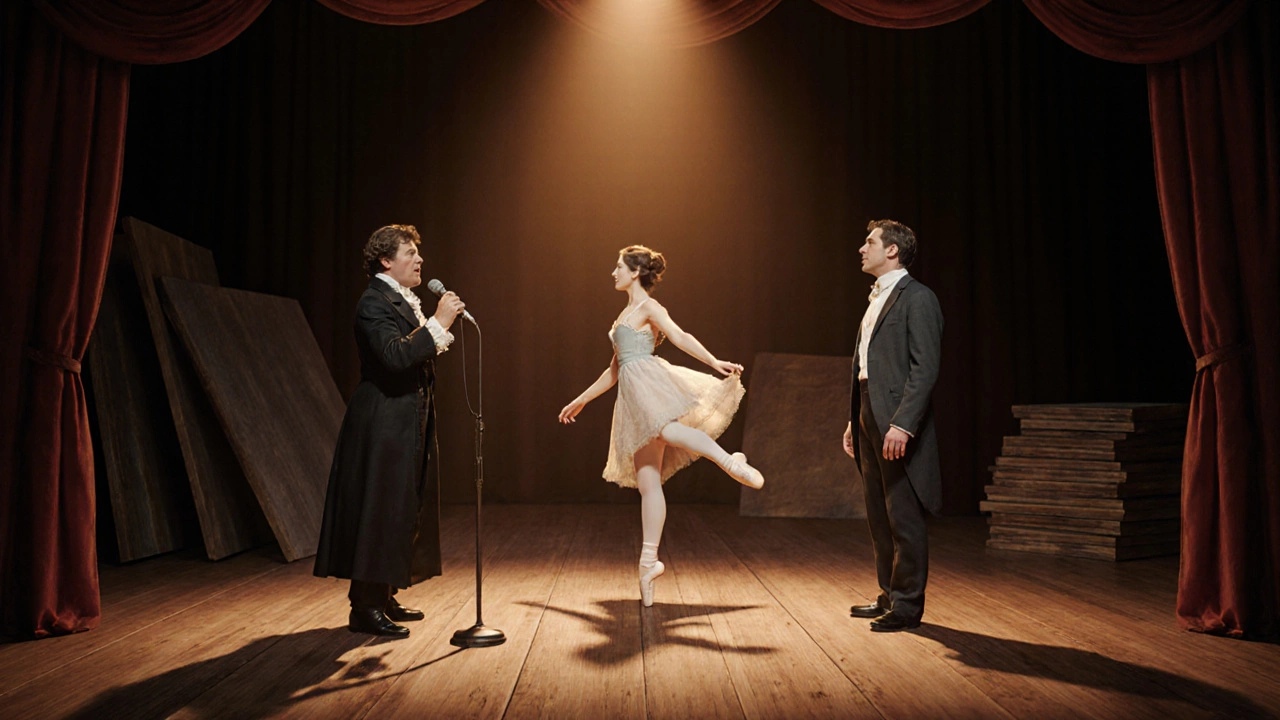The Black Crook – The Birthplace of American Musical Theatre
When you hear The Black Crook, a 19th‑century production that fused drama, song, and spectacular visuals, often hailed as the world’s first musical. Also known as America’s first musical, it laid the groundwork for today’s Broadway spectacles and even influenced visual‑arts trends beyond the stage.
One of the key forces behind its magic was Stagecraft, the technical art of building sets, lighting, and special effects for live performances. The Black Crook demanded elaborate backdrops, moving scenery, and early forms of electric lighting, showing that a production’s visual impact could be as vital as the music. This emphasis on visual storytelling later inspired painters to experiment with texture – think of the spatula technique in oil painting, where artists build up thick layers to create depth, much like a stage set adds dimension to a story.
Movement, Dress, and Design: How the Show Shaped Performance Art
Another pillar was Choreography, the arrangement of dance movements that tell a narrative through motion. The Black Crook featured dozens of dancers performing synchronized routines, proving that dance could drive plot as powerfully as dialogue. Modern choreographers still reference those early formations when designing large‑scale numbers for pop concerts and theater revivals.
Equally iconic was Costume Design, the craft of creating clothing that defines characters and enhances visual theme. Opulent gowns, feathered headdresses, and period‑accurate attire turned the stage into a moving gallery. Today, costume designers borrow that sense of drama when shaping characters for film, television, and even fine‑art photography, where the line between portrait and performance blurs.
Behind every costume lay Set Design, the creation of physical environments that support the story’s mood and action. The Black Crook’s multi‑level forests, towering castles, and hidden trapdoors set a new standard for immersive worlds. Those set pieces inspired painters to think bigger on canvas, leading to larger‑scale oil works that capture dramatic lighting and perspective – techniques you’ll find in articles about brightening dull oil paintings or choosing the right canvas size for impact.
These four elements – stagecraft, choreography, costume design, and set design – are tightly linked. The Black Crook combines music, dance, and visual spectacle (semantic triple: The Black Crook combines music and dance). Stagecraft requires elaborate set construction (semantic triple: Stagecraft requires set construction). Costume design influences visual storytelling (semantic triple: Costume design shapes narrative). Modern artists often reference historic productions when exploring new media (semantic triple: Modern artists reference historic productions).
Beyond the theatre, the show sparked conversations still alive in today’s art world. Critics who question modern art’s relevance echo the debates that surrounded The Black Crook’s boldness – was it high art or mere spectacle? Those discussions appear in pieces about modern art criticism and the evolution of audience taste.
Whether you’re an aspiring set builder, a dancer curious about historic choreography, a costume student, or a visual artist looking for theatrical inspiration, the legacy of The Black Crook offers concrete ideas you can apply now. Below you’ll find a curated collection of articles that dive deep into techniques, market trends, and creative processes that echo the show’s pioneering spirit. Explore the links to learn how oil painting tools, size choices, and pricing strategies trace back to the same drive for audience impact that defined America’s first musical.
